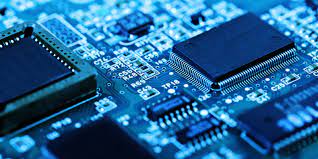The Importance of Understanding Components in Modern Technology
In the realm of technology, the term “components” plays a crucial role in the functioning of various devices and systems. Components are the building blocks that come together to form complex structures, whether it be in a computer, electronic device, or machinery.
Understanding components is essential for engineers, developers, and users alike, as it enables them to comprehend how different parts work together to achieve a specific function. Let’s delve deeper into the significance of components in modern technology.
Definition of Components
Components are individual units that have a specific function and can be integrated with other components to create a larger system. These units can range from simple elements like resistors and capacitors to more complex ones such as processors and memory modules.
Role of Components
Components serve various roles depending on their function within a system. Some components process data, some store information, while others facilitate communication between different parts of a device. Each component contributes uniquely to the overall performance of the technology it is part of.
Importance of Component Compatibility
One critical aspect of working with components is ensuring compatibility between them. Components need to be carefully selected and integrated to ensure they work seamlessly together without causing conflicts or performance issues.
Evolution of Components
The field of technology is constantly evolving, leading to advancements in component design and functionality. As new technologies emerge, components are developed to meet the demands for faster processing speeds, increased storage capacity, and improved efficiency.
Future Trends in Component Development
Looking ahead, future trends in component development point towards miniaturisation, increased energy efficiency, and enhanced connectivity between devices. These advancements will shape the next generation of technology and drive innovation across various industries.
In conclusion, components form the backbone of modern technology systems and understanding their role is essential for anyone involved in the tech industry. By grasping the significance of components and staying abreast of developments in this field, we can harness the power of technology to drive progress and innovation in our interconnected world.
Top 5 Tips for Proper Care and Installation of Electronic Components
- Ensure all components are compatible with each other before assembling.
- Handle components with care to avoid damage from static electricity.
- Follow manufacturer’s guidelines for installing and configuring components.
- Keep components clean and free of dust to maintain optimal performance.
- Regularly check for updates or firmware upgrades for better functionality.
Ensure all components are compatible with each other before assembling.
It is crucial to ensure that all components are compatible with each other before assembling them into a system. Compatibility between components is essential to avoid issues such as performance degradation, malfunctions, or even damage to the components themselves. By carefully checking compatibility specifications and ensuring that all parts work harmoniously together, you can create a reliable and efficient technology setup that functions optimally. Taking the time to verify compatibility upfront can save you from potential headaches and costly mistakes down the line.
Handle components with care to avoid damage from static electricity.
When working with components, it is crucial to handle them with care to prevent damage caused by static electricity. Static electricity can build up on surfaces or in the air and discharge when it comes into contact with sensitive electronic components, leading to potential malfunctions or permanent damage. To avoid such risks, it is advisable to ground yourself by touching a metal object before handling components and to use anti-static wrist straps or mats when working with delicate parts. By taking precautions and treating components gently, you can ensure their longevity and proper functioning in your devices.
Follow manufacturer’s guidelines for installing and configuring components.
It is crucial to adhere to the manufacturer’s guidelines when installing and configuring components in any technological device or system. By following these guidelines, users can ensure that the components are integrated correctly and operate optimally within the intended parameters. Manufacturers provide specific instructions to guarantee compatibility, performance, and safety, ultimately enhancing the overall functionality and longevity of the technology. Failure to follow these guidelines may result in malfunctions, reduced efficiency, or even damage to the device. Therefore, it is essential to carefully follow the manufacturer’s recommendations for a seamless and reliable integration of components.
Keep components clean and free of dust to maintain optimal performance.
To ensure optimal performance, it is crucial to keep components clean and free of dust. Dust accumulation can hinder the functionality of components, leading to overheating, reduced efficiency, and potential damage. Regular cleaning and maintenance not only extend the lifespan of the components but also help maintain their peak performance levels. By incorporating this simple tip into your routine, you can enhance the reliability and longevity of your technology devices.
Regularly check for updates or firmware upgrades for better functionality.
To ensure optimal functionality of your devices, it is advisable to regularly check for updates or firmware upgrades. These updates often contain bug fixes, performance enhancements, and new features that can improve the overall performance and security of your components. By staying up-to-date with the latest updates, you can ensure that your devices operate smoothly and efficiently, providing you with a better user experience and prolonging the lifespan of your technology.

